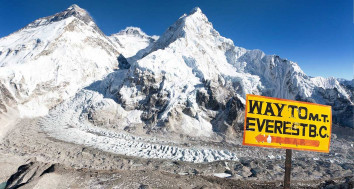19th Jul, 2023
Why khaptad National Park famous for?
Khaptad National Park is famous for its pristine natural beauty, diverse flora and fauna, and its religious and cultural significance. Located in the far-western region of Nepal, Khaptad National Park covers an area of 225 square kilometers. It stretches over 4 districts of the region namely Bajhang, Bajura, Achham and Doti.
Table of Contents
The park is known for its unique ecosystem, which encompasses diverse landscapes including grasslands, forests, and alpine meadows. The area is home to several endangered and rare species, including the musk deer, leopard, Himalayan black bear, and the red panda. The park is also a haven for bird enthusiasts, as it hosts over 270 species of birds, including the impeyan pheasant, Nepal's national bird.
What sets Khaptad National Park apart is its religious and cultural significance. The park is named after Khaptad Baba, a revered Hindu sage who meditated in the area for many years. His ashram, located within the park, is a popular pilgrimage site and attracts devotees from Nepal and India. During certain religious festivals, the park becomes a hub of spiritual activities and rituals.
Apart from its natural and cultural attractions, Khaptad National Park offers opportunities for hiking, nature walks, bird watching, and wildlife observation. The park is relatively less crowded compared to other popular national parks in Nepal, making it an ideal destination for those seeking tranquility and solitude.
To visit Khaptad National Park, it is advisable to join a guided tour or hire a local guide, as the park is remote and requires careful planning and preparation. The best time to visit is during the months of April to October when the weather is favorable and the park's flora is in full bloom.
Overall, Khaptad National Park is a hidden gem of Nepal, offering a unique blend of natural beauty, biodiversity, cultural heritage, and spiritual significance. It provides a serene and enriching experience for nature lovers, religious pilgrims, and those seeking an off-the-beaten-path adventure.
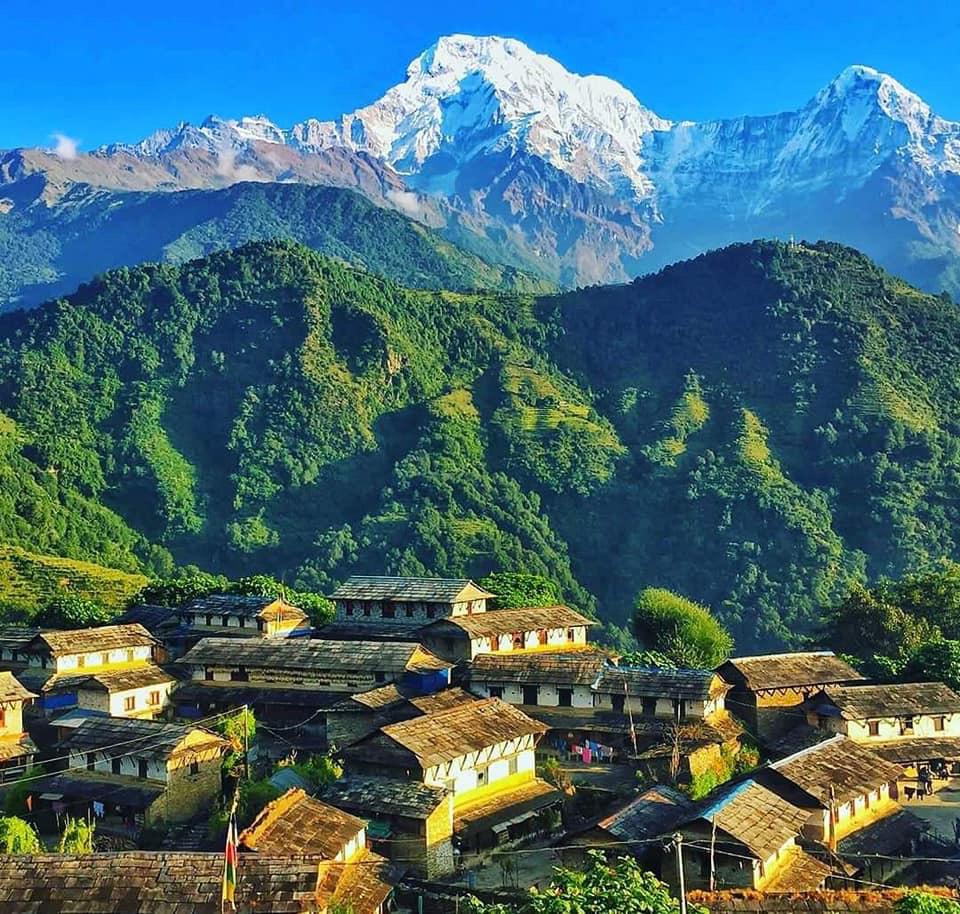
Major Highlights of Khaptad National Park Tour
The major highlights of a tour to Khaptad National Park include:
Khaptad Baba Ashram:
Visit the sacred ashram of Khaptad Baba, a revered Hindu sage who meditated in the area. Explore the serene surroundings and soak in the spiritual atmosphere.
Biodiversity:
Khaptad National Park is known for its rich biodiversity. Explore the park's diverse flora and fauna, including rare and endangered species like musk deer, leopard, red panda, and Himalayan black bear. Birdwatchers will be delighted with the opportunity to spot a variety of avian species, including the majestic impeyan pheasant.
Natural Beauty:
Khaptad National Park offers stunning natural landscapes, including alpine meadows, grasslands, and dense forests. Enjoy breathtaking views of snow-capped peaks, rolling hills, and beautiful valleys as you hike through the park.
Trekking and Hiking:
The park provides excellent opportunities for trekking and hiking. Explore scenic trails that lead you through pristine forests, past gushing rivers, and to high-altitude meadows. The trails offer a chance to immerse yourself in nature and witness the park's unique ecosystem up close.
Cultural Encounters:
Interact with local communities and experience their unique culture and traditions. Learn about the traditional farming practices, lifestyle, and religious beliefs of the people living in the vicinity of the park.
Tranquility and Serenity:
Khaptad National Park is relatively less crowded compared to other popular national parks in Nepal. This makes it an ideal destination for those seeking tranquility and solitude in a peaceful natural setting.
Pilgrimage Sites:
In addition to the Khaptad Baba Ashram, the park also houses other religious sites like Triveni, where three rivers converge, and Nag Dhunga, a sacred pond. These sites hold religious significance for both Hindus and Buddhists.
Camping and Nature Retreats:
Khaptad National Park offers camping facilities, allowing visitors to spend nights amidst nature. Enjoy the starry nights, bonfires, and the peaceful ambiance of the park. Some areas also offer nature retreats where you can relax and rejuvenate in the lap of nature.
Visiting Khaptad National Park is a unique opportunity to explore the unspoiled natural beauty, cultural heritage, and spiritual significance of the region. It offers a serene and enriching experience for nature lovers, adventure enthusiasts, and those seeking a spiritual retreat away from the bustling city life.
Things to know before going to tour to Khaptad National Park
Before embarking on a tour to Khaptad National Park, here are some important things to know:
Permits:
Obtain the necessary permits before entering the national park. These include the Khaptad National Park Entry Permit and the TIMS (Trekkers' Information Management System) card.
Weather and Best Time to Visit:
Khaptad National Park experiences different weather patterns throughout the year. The best time to visit is during the spring (March to May) and autumn (September to November) seasons when the weather is generally favorable and the flora is in full bloom. However, it's essential to be prepared for changing weather conditions, as rain and fog can occur even during the peak seasons.
Accommodation and Facilities:
Accommodation options in the park are limited. The park offers basic lodges and campsites, but it's advisable to bring your own camping gear if you prefer camping. Facilities such as electricity, hot water, and Wi-Fi may not be readily available, so be prepared for a more rustic experience.
Local Culture and Customs:
Respect the local culture and customs of the communities surrounding the park. Dress modestly and be mindful of local traditions. It's advisable to seek permission before taking photographs of people or their property.
Trekking and Hiking:
Khaptad National Park offers several trekking and hiking routes. It's important to be physically fit and prepared for long walks in varying terrains. Carry sufficient water, snacks, and appropriate trekking gear. Hiring a local guide or joining a guided tour is recommended to ensure safety and to navigate the trails effectively.
Wildlife and Nature Conservation:
Help preserve the park's delicate ecosystem by following the principles of Leave No Trace. Refrain from littering and avoid disturbing the flora and fauna. Observe wildlife from a distance and do not feed or disturb them.
Safety and First Aid:
Ensure your personal safety by taking necessary precautions. Carry a basic first aid kit and any necessary medications. It's advisable to have travel insurance that covers emergency evacuation in case of any unforeseen incidents.
Communication and Connectivity: Mobile phone coverage may be limited in the park area. Inform your family and friends about your travel plans and expected return dates. It's advisable to carry a portable charger and keep your devices fully charged.
Khaptad National Park Tour Itinerary from Kathmandu
Here is a itinerary for a Khaptad National Park tour starting from Kathmandu:
Day 1: Arrival in Kathmandu(1400 m/4344 ft) and transfer to Hotel
Upon your arrival in Kathmandu, you will be greeted by a representative and transferred to your hotel. Spend the day exploring the vibrant city and preparing for the trek.
Day 2: Flight from Kathmandu to Dhangadhi (109 m/358 ft) 45 minutes of flight and drive to Silgadhi.
Fly from Kathmandu to Dhangadhi Airport, Dhangadi in the far-western region of Nepal. Upon arrival, meet your guide and drive to Silgadhi, the headquarters of Doti District. Overnight stay in Silgadhi.
Day 3: Silgadhi to Jhigrana(2285 m/ 7696 ft) 4-5 hours of drive
Drive from Silgadhi to Jhigrana, a small village near the entrance of Khaptad National Park. Begin your trek from Jhigrana and hike through picturesque landscapes, forests, and farmlands to reach Jhigrana.
Overnight stay in Jhigrana.
Day 4: Jhigrana to Khaptad National Park (1400m/4600 ft) 6-7 hours of trek
Continue your trek from Jhigrana to Khaptad National Park. Enjoy the serene surroundings, diverse flora, and occasional encounters with wildlife along the way. Reach Khaptad National Park and visit the Khaptad Baba Ashram. Overnight stay in Khaptad.
Day 5-6: Exploration in Khaptad National Park
Spend these days exploring Khaptad National Park. Hike to different viewpoints, visit sacred ponds, and immerse yourself in the natural beauty of the park. Observe the unique flora and fauna and enjoy the tranquility of the surroundings. Overnight stays in Khaptad.
Day 7: Khaptad National Park to Jhigrana (2285 m/ 7696 ft), 6-7 hours of trek
After breakfast, begin your descent from Khaptad National Park to Jhigrana. Enjoy the downhill trek and capture the final glimpses of the stunning landscapes. Overnight stay in Jhigrana.
Day 8: Jhigrana to Silgadhi (1310 m/ 4297 ft) 5-6 hour of drive
Trek back to Silgadhi, retracing your steps through the picturesque route. Upon arrival in Silgadhi, rest and relax. Overnight stay in Silgadhi.
Day 9: Silgadhi to Dhangadi and fly back to Kathmandu (1400m/4344 ft) transfer to Hotel
Drive from Silgadhi to Dhangadi and catch a flight back to Kathmandu. Upon arrival in Kathmandu, transfer to your hotel. Spend the evening exploring the city or indulging in some souvenir shopping.
Day 10: Departure from Kathmandu (1400m/4344 ft)
After breakfast, transfer to the airport for your departure flight, marking the end of your Khaptad National Park tour.
Frequently Asked Question about Khaptad National Park Tour
Which district is Khaptad National Park in?
Khaptad National Park is located in the far-western region of Nepal, primarily within the boundaries of Bajhang, Bajura, Doti, and Achham districts. It spans an area of approximately 225 square kilometers and is renowned for its pristine natural beauty, diverse flora and fauna, and religious significance. The park's headquarters is situated in Silgadhi, which is the administrative center of Doti District. Khaptad National Park offers a tranquil and picturesque retreat, attracting nature enthusiasts, religious pilgrims, and adventure seekers who wish to explore its rich biodiversity and experience the spiritual ambiance of the revered Khaptad Baba Ashram.
What is the entry fee for Khaptad National Park?
The entry fee for Khaptad National Park is as follows: For foreign nationals, the entry fee is NPR 3,000 per person per entry. For SAARC nationals, the fee is NPR 1,500 per person per entry. Similarly, for Nepali nationals, the fee is NPR 100 per person per entry. These fees are subject to change, so it is advisable to check with the park authorities or a reliable source for the most up-to-date information. The entry fee contributes to the conservation and maintenance of the park, ensuring its preservation for future generations to enjoy.
How to reach Khaptad National Park?
Reaching Khaptad National Park involves a combination of air and road travel. First, you need to take a flight from Kathmandu to Dhangadi, which is the nearest airport to Khaptad. From Dhangadi, you can hire a private vehicle or take a local bus to Silgadhi, the headquarters of Doti District. Silgadhi serves as the gateway to Khaptad National Park. From Silgadhi, you can either hire a private jeep or take a local bus to Jhigrana, which is near the entrance of the park. The final leg of the journey involves trekking from Jhigrana to Khaptad National Park, where the main attractions are located. It is recommended to hire a local guide or join a guided tour for a hassle-free and well-organized journey to Khaptad.
What are the best month for Khaptad National Park Tour?
The best months for a Khaptad National Park tour are generally from March to May and September to November. During these months, the weather is generally pleasant with clear skies and mild temperatures. The spring season (March to May) brings blooming flowers, lush greenery, and a vibrant atmosphere. It is an ideal time for birdwatching and enjoying the park's diverse flora. Similarly, the autumn season (September to November) offers clear views of the surrounding mountains, comfortable temperatures, and stable weather conditions. It is a popular time for trekking and enjoying the breathtaking landscapes of Khaptad National Park. However, it's important to note that weather conditions can vary, and it is advisable to check the latest weather forecasts and consult with local authorities or trekking agencies for the most up-to-date information before planning your visit.
What type of clothing and gear are requires for Khaptad National Park?
When visiting Khaptad National Park, it is essential to pack appropriate clothing and gear for a comfortable and safe experience. Here are some items you should consider:
Clothing:
Layering is key to adjust to changing temperatures. Pack lightweight and breathable shirts, long-sleeved shirts, and comfortable pants for hiking. Carry a lightweight fleece or down jacket for colder temperatures. Don't forget to bring a waterproof and windproof outer shell for protection against rain and wind.
Footwear:
Choose sturdy and comfortable hiking boots with good ankle support. Make sure they are broken in before your trip. Additionally, pack a pair of comfortable walking shoes or sandals for relaxing in the evenings.
Accessories:
Bring a wide-brimmed hat or cap to protect yourself from the sun. Carry sunglasses with UV protection to shield your eyes. Don't forget to pack a lightweight and quick-drying towel.
Trekking Gear:
Consider carrying a good quality backpack with sufficient capacity to carry your essentials. Bring a refillable water bottle or a hydration system to stay hydrated on the trail. Trekking poles can provide stability and support on challenging terrains.
Sleeping Gear:
If you plan to camp or stay in lodges with limited bedding, bring a lightweight sleeping bag suitable for the expected temperatures.
Protection:
Carry sunscreen with a high SPF rating to protect your skin from harmful UV rays. Insect repellent is also essential to ward off mosquitoes and other insects.
First Aid Kit:
Pack a basic first aid kit containing essentials such as adhesive bandages, pain relievers, antiseptic cream, and any necessary personal medications.
It's important to pack light and prioritize essential items. Consider the season and expected weather conditions when selecting your clothing and gear.
How much does it cost for Khaptad National Park Tour?
The cost of a Khaptad National Park tour from Kathmandu can vary depending on several factors, including the duration of the tour, mode of transportation, accommodation choices, and the inclusion of additional services such as guides or porters. On average, a 7 to 10-day tour can range from $800 to $1500 per person. This cost typically includes transportation from Kathmandu to Khaptad, accommodation in local lodges or camping sites, meals, necessary permits, and the services of a guide. Additional expenses to consider are international flights, travel insurance, personal expenses, and tips for guides and staff. It is recommended to consult with a reputable tour operator or trekking agency to get a detailed cost breakdown and to customize the tour according to your preferences and budget.
From where we can start our trekking to Khaptad National Park?
To start your trekking journey to Khaptad National Park, you can begin from Jhigrana. Jhigrana is a small village located near the entrance of the park and serves as a popular starting point for trekkers. You can reach Jhigrana by hiring a private vehicle or taking a local bus from Silgadhi, the headquarters of Doti District. Silgadhi is accessible by road from major cities like Dhangadi and Mahendranagar. From Jhigrana, you can follow the well-marked trails that lead into the park, immersing yourself in the stunning landscapes and natural beauty as you trek towards the Khaptad Baba Ashram and other attractions within the park.
What types of Wifelife found in Khaptad National Park?
Khaptad National Park is home to a diverse range of wildlife species, showcasing the richness of its ecosystem. The park is known for its varied birdlife, with over 270 species recorded, including the colorful impeyan pheasant, Himalayan monal, and koklass pheasant. Other avian species such as woodpeckers, flycatchers, and eagles can also be spotted. Mammals found in the park include Himalayan black bear, musk deer, leopard, langur monkeys, and barking deer. Additionally, reptiles, amphibians, and various species of butterflies add to the biodiversity of Khaptad National Park. Exploring the park offers opportunities to witness and appreciate the diverse wildlife that thrives in this natural haven.
Conclusion
In conclusion, a tour to Khaptad National Park offers a unique and enriching experience for nature lovers, adventure enthusiasts, and those seeking spiritual rejuvenation. The park's pristine beauty, diverse flora and fauna, and cultural significance make it a captivating destination. Exploring the serene landscapes, hiking through dense forests, and visiting the revered Khaptad Baba Ashram provide an opportunity to connect with nature and spirituality. The park's tranquil atmosphere, coupled with its rich biodiversity, offers a chance to witness rare wildlife and enjoy breathtaking views. With proper planning, a Khaptad National Park tour can be a memorable journey filled with adventure, serenity, and a deeper understanding of Nepal's natural and cultural heritage.
Recent Posts
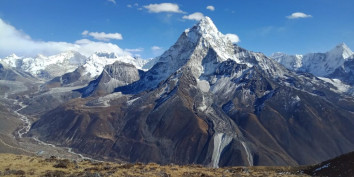
3rd May, 2022
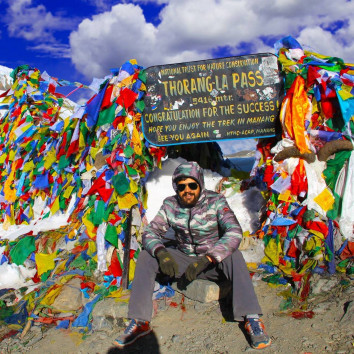
5th Feb, 2022
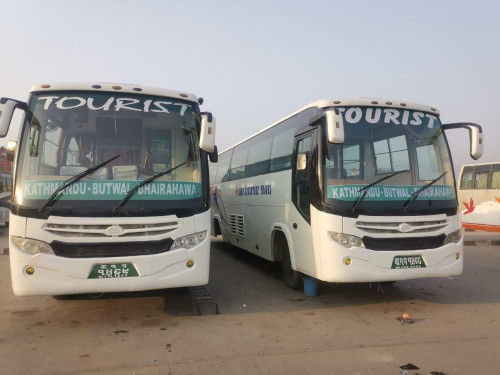
19th Mar, 2023

4th Apr, 2023
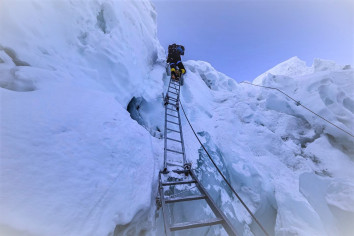
15th Jun, 2023
-1.JPG)
16th Jun, 2023
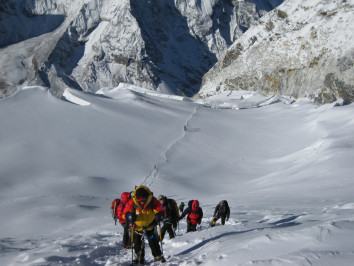
16th Jun, 2023
16th Jun, 2023

21st Jun, 2023
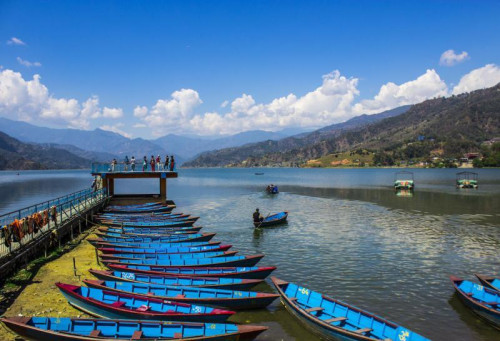
22nd Jun, 2023

25th Jun, 2023
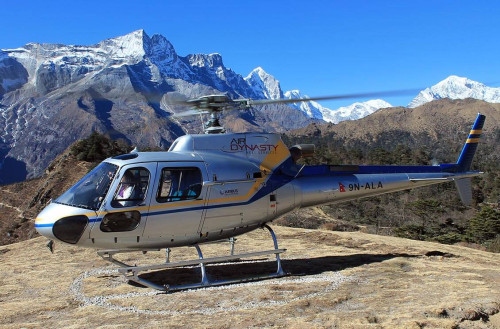
25th Jun, 2023

28th Jun, 2023
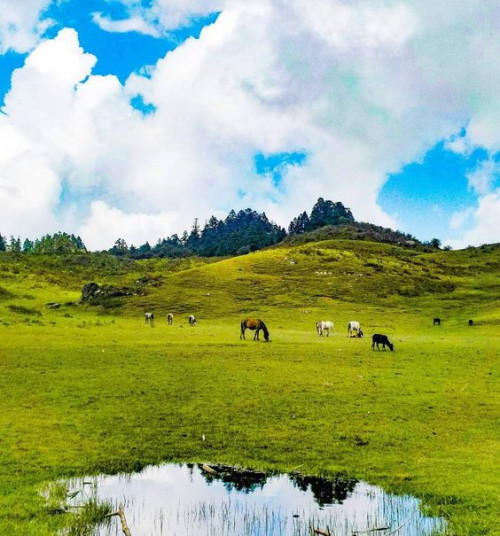

 Recommended On
Recommended On


